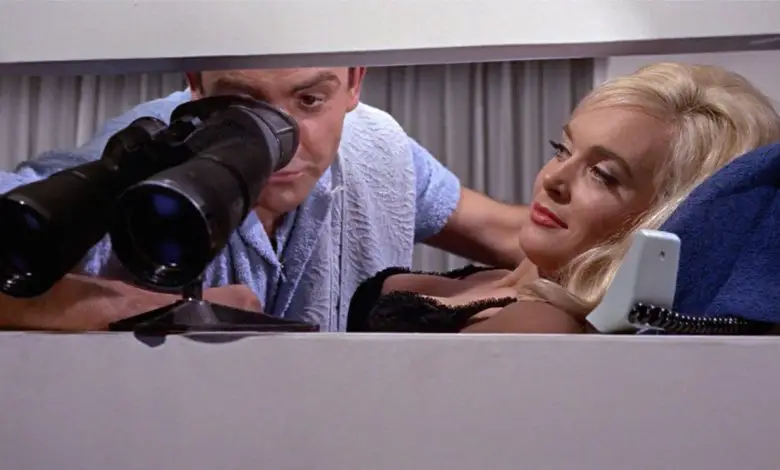Did the Golden Girl in the James Bond movie “Goldfinger” really die because of the gold paint?

The James Bond movie “Goldfinger” has left an indelible mark on pop culture, with its iconic scenes and unforgettable characters. One scene, in particular, has sparked intrigue and speculation over the years – the fate of the Golden Girl. Covered head to toe in gold paint, she lies motionless on a bed, seemingly lifeless. The question arises: Did the Golden Girl really die because of the gold paint? In this article, we delve into the details surrounding this captivating scene and separate fact from fiction.
Key Takeaways
- The notion of the Golden Girl dying from the gold paint in “Goldfinger” is fictional, as god itself is a non-toxic metal.
- The danger associated with being entirely covered in a substance, such as gold paint, lies in skin asphyxiation, which hinders proper perspiration and gas exchange.
- The scene with the Golden Girl highlights the ruthlessness of the main antagonist and serves as a visual metaphor for the consequences of involvement in criminal activities.
In the iconic James Bond movie “Goldfinger,” one of the most memorable scenes involves a character known as the “Golden Girl.” Covered in gold paint from head to toe, she lies motionless on a bed, seemingly lifeless. This scene has captivated audiences for decades, leading to the question: Did the Golden Girl really die because of the gold paint?
To understand the context, let’s delve into the details of the movie and examine the facts surrounding this intriguing scene.
The Plot of “Goldfinger”
Released in 1964, “Goldfinger” is the third film in the James Bond series, starring Sean Connery as the suave British spy. The film follows Bond’s mission to investigate Auric Goldfinger, a wealthy businessman with a devious plan to rob Fort Knox.
The Golden Girl’s Role
The Golden Girl, played by actress Shirley Eaton, appears in the movie as Jill Masterson, Goldfinger’s accomplice. She is tasked with helping Goldfinger cheat at a game of cards. When Bond uncovers their scheme, he defeats Goldfinger, which leads to a memorable confrontation between Bond and Jill.
The Infamous Scene
In the scene that has sparked much debate, Bond discovers Jill lying on a bed, her body entirely covered in gold paint. Initially, it appears that she has been killed by the toxic effects of the gold paint covering her skin.
The Myth: Death by Gold Paint
Contrary to popular belief, the idea that Jill Masterson died because of the gold paint is purely fictional. In reality, death by gold paint is highly unlikely, if not impossible.
Gold itself is a non-toxic metal, and the process of gilding or covering someone in gold paint does not pose an immediate threat to their life. However, the misconception may have stemmed from the film’s portrayal of Jill as a victim of Goldfinger’s ruthlessness, enhancing the suspense and drama of the scene.
The Truth: Death by Skin Asphyxiation
In reality, if someone were to be entirely covered in a substance like gold paint, a different danger arises: skin asphyxiation. This condition occurs when a substance covers the skin so completely that it blocks the pores, preventing proper perspiration and gas exchange.
The human body relies on perspiration to regulate temperature and eliminate toxins. When the skin cannot breathe, it can lead to overheating, suffocation, and potential complications, such as heatstroke. Therefore, being entirely coated in gold paint, or any other substance for that matter, can be dangerous due to the risk of skin asphyxiation.
The Movie’s Artistic License
While “Goldfinger” took artistic liberties by portraying Jill Masterson’s death as a result of the gold paint, it did capture the imagination of audiences and became a defining moment in the Bond franchise. The scene serves as a visual metaphor, emphasizing Goldfinger’s ruthlessness and the price his associates pay for their involvement in his schemes.
FAQ: The Golden Girl in “Goldfinger”
- What happened to the Golden Girl in the James Bond movie “Goldfinger”?
In the movie “Goldfinger,” the Golden Girl, portrayed by Shirley Eaton, played the character of Jill Masterson. She was an accomplice of the villain Auric Goldfinger and was tasked with aiding him in cheating at a card game. However, when James Bond exposes their scheme, Jill meets a tragic fate. She is discovered lying motionless on a bed, her body covered in gold paint.
- Did the Golden Girl die from the gold paint?
No, the Golden Girl did not die from the gold paint itself. While the film suggests that she perished due to the toxic effects of the gold paint, this is purely fictional. Gold is a non-toxic metal, and being covered in gold paint would not cause immediate harm. The concept of death by gold paint was added to enhance the dramatic impact of the scene.
- What is skin asphyxiation?
Skin asphyxiation occurs when the skin is completely covered, hindering the exchange of gases and preventing perspiration. It is a condition where the skin cannot breathe, leading to potential complications. When the pores are blocked, the body is unable to regulate temperature effectively, and toxins may not be properly eliminated. This can result in overheating, suffocation, and even heatstroke.
- Could someone really die from being entirely covered in a substance?
Yes, it is possible for someone to face dangers if they are entirely covered in a substance that hinders the skin’s ability to breathe. Whether it is gold paint, latex, or any other substance, the risk of skin asphyxiation arises when the pores are blocked. This can lead to serious health complications and, in extreme cases, even prove fatal.
- Is gold paint toxic?
Gold paint itself is not toxic. Gold is a noble metal and does not react with the human body in harmful ways. However, it is essential to consider other factors such as the base and additives in the paint, as they might have potential toxicity. Therefore, when using any kind of paint or cosmetic product, it is advisable to follow the manufacturer’s guidelines and ensure proper ventilation.
- What was the significance of the Golden Girl’s character in “Goldfinger”?
The character of the Golden Girl, Jill Masterson, served as a symbol of the dangers and consequences associated with involvement in Goldfinger’s criminal activities. Her fate showcased the ruthlessness of the main antagonist and the price his associates paid for their collaboration. The scene emphasized the high stakes involved in Bond’s mission and added depth to the overall narrative.
- How did the scene impact the James Bond franchise?
The scene featuring the Golden Girl in “Goldfinger” has become an iconic moment in the James Bond franchise. It has resonated with audiences and has been widely discussed and referenced over the years. The scene’s visual impact, combined with the intriguing concept of someone covered in gold paint, has solidified its place in cinema history.
- Was the concept of the Golden Girl’s demise based on any real-life incidents?
No, the concept of the Golden Girl’s demise was purely fictional and not based on any real-life incidents. While the idea of someone being covered in gold paint and facing deadly consequences is imaginative, it does not reflect any documented occurrences in reality.
- What other memorable scenes are there in “Goldfinger”?
“Goldfinger” is known for several memorable scenes, apart from the one featuring the Golden Girl. Some notable examples include the iconic introduction of the Aston Martin DB5, the laser scene where Bond is strapped to a table, and the dramatic finale set in Fort Knox. These scenes, along with the Golden Girl scene, have contributed to the enduring popularity of the film.
- Where can I find more information about “Goldfinger” and the James Bond franchise?
For more information about “Goldfinger” and the James Bond franchise, you can visit the official James Bond website at https://www.007.com/. Additionally, fan sites such as MI6-HQ offer a wealth of resources and insights into the Bond universe, including detailed information about “Goldfinger” and its impact on popular culture.
For more information on the James Bond franchise and “Goldfinger,” you can visit the official James Bond website or explore dedicated fan sites such as MI6-HQ.
Conclusion
While the Golden Girl’s demise in “Goldfinger” was not a direct result of the gold paint, the scene continues to captivate audiences and remain a defining moment in the James Bond franchise. The fictional portrayal of death by gold paint adds suspense and drama, enhancing the impact of the scene. However, it is important to recognize that being entirely covered in a substance can pose risks, such as skin asphyxiation, hindering the skin’s ability to breathe. As viewers, we are reminded of the dangers associated with the world of espionage and the sacrifices made by those involved. The Golden Girl scene will forever be etched in cinematic history, leaving an enduring impression on Bond fans worldwide.









One Comment